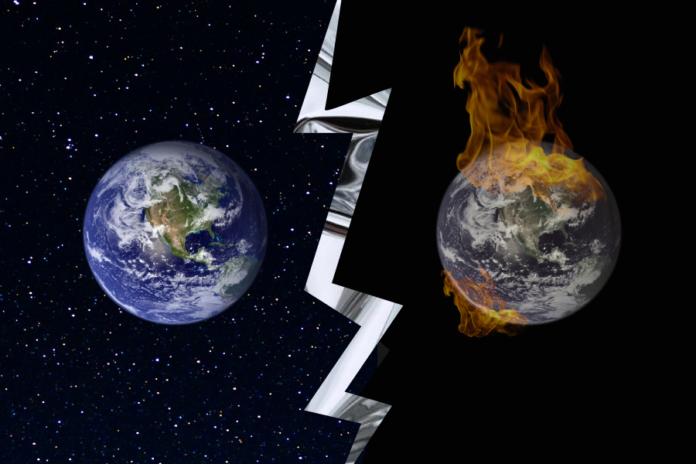The universe is expanding faster than models predict; dark matter could be the missing piece
By SONORA SLATER — science@theaggie.org
Our universe grows bigger every second, the space between galaxies stretching for billions of years. A value called the Hubble constant tells us the rate at which this expansion is happening, and, indirectly, the size of the universe today.
But there are other ways to measure the size of the universe as well — and as it turns out, the measurements that have been predicted and the ones that are being observed don’t match up. In other words, the universe is expanding faster than the standard model of cosmology says it should be. This discrepancy is known as the Hubble constant problem.
Multiple solutions have been proposed to account for the discrepancy, but the challenge is that any solution which changes the assumptions of the model must do so without breaking the agreement that exists between other cosmological measurements and model predictions.
However, researchers at UC Davis, in collaboration with Francis-Yan Cyr-Racine, a professor in the Department of Physics and Astronomy at the University of New Mexico, are using ideas from particle physics to approach this challenge in a new way, according to a recent press release. It may successfully “[allow] for a faster expansion rate without changing the most precisely-tested other predictions of the [model].”
For this model to work, they need a “mirror world,” which we can only interact with through gravity, according to the press release. This mirror world is made of dark matter.
“Now, dark matter, we don’t know what it is,” Cyr-Racine said. “The only thing we know is that it forms this gravitational backbone. We see its gravitational effect on things like stars and galaxies and other things, but we don’t know its nature. It could be a new particle; it could be what we call primordial black holes; it could be something more exotic that we don’t really understand at all today.”
Dark matter is already a part of the current standard cosmological model. However, what the researchers discovered was that for their new model to work, they needed some of the dark matter to have slightly different properties.
“There’s a tiny part of dark matter that needs to behave much more like the ‘visible sector,’ or matter that we are surrounded with on Earth,” Cyr-Racine said. “We call this small part of dark matter the mirror world, because it kind of mirrors our world in a sense — the properties of dark matter will be atoms, there will be equivalents to light, but it’s going to be dark light, if you will.”
One of the things that led their team into considering the mirror world as a solution was the idea of symmetry, according to Fei Ge, a graduate student at the UC Davis Department of Physics and Astronomy who worked on the research.
According to Lloyd Knox, a professor in the UC Davis Department of Physics and Astronomy, in the context of cosmology, symmetry means that you can change some aspects of a model and have certain observable properties remain unchanged.
“What we found of the symmetry is that the absolute values [don’t] matter in our cosmological theory,” Ge said. “What really matters is the relative ratios.”
The remaining issue to solve in this new model is similarly related to ratios; for the theory to work, according to Cyr-Racine, researchers will have to find a way to change the scale of the typical length that a photon travels in the universe in certain circumstances.
“This is hard to do, because this is, like, undergraduate physics that technically we understand very well,” Cyr-Racine said. “So the question is, can we find a mechanism that changes this physics by a little bit — but not by much?”
Despite this being a difficult problem to solve, it provides a direction for researchers about where to go next.
“I now feel a clear target of what I’m supposed to achieve,” Cyr-Racine said. “We’ve whittled down the problem that was a very complicated problem into one problem, and that, I can focus on and try to solve without getting scatterbrained with other ideas.”
However, according to Knox, there’s no guarantee that a mirror world is the true solution to the problem — especially because so far, attempts to reconcile the photon scattering rate haven’t worked.
“I really think that’s a strong indicator that as far as solving the problem, we’re probably not on the right path,” Knox said. “We haven’t given up on it, but I think it’s important to get across that I’m not actually that hopeful that this is going to turn out to be correct.”
But even if this theory is eventually disproven, Knox believes that their work is valuable for the sake of building an improved understanding of the system, and why it is so challenging to gain agreement across cosmological models and observations.
“What is correct is that this model has helped us to understand what’s going on,” Knox said. “It’s not as exciting as discovering the mirror world, but I think it’s important to say. But on the other hand, who knows? That’s part of the fun of working with a puzzle we don’t know the solution to.”
Written by: Sonora Slater — science@theaggie.org




